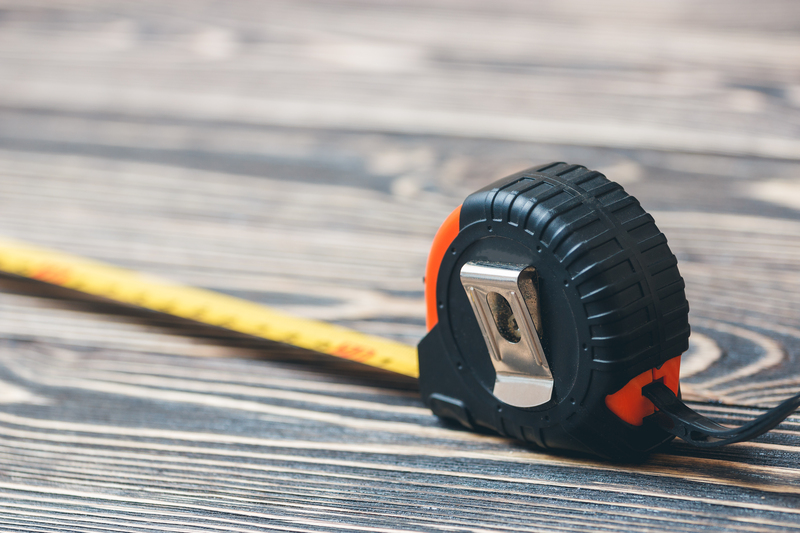Harnessing Energy: The Foundations of Kinetic Lifting
Kinetic lifting, at its very core, represents a fusion between the science of energy and the art of effective movement. Whether you're a professional athlete, a dedicated gym-goer, or simply someone interested in the latest developments in strength training, understanding the foundations of kinetic lifting can revolutionize the way you approach physical activity. In this comprehensive guide, we'll delve into the details of harnessing kinetic energy for optimal lifting techniques, cover the science behind motion-based strength, and offer practical insights for applying these principles to your own routine.
What is Kinetic Lifting?
The term kinetic lifting refers to a style of lifting that maximizes the use of kinetic energy--the energy of motion--during exercises. Unlike traditional weightlifting, which often isolates muscle groups with controlled, static movements, kinetic lifting incorporates dynamic, full-body motions that enable lifters to engage multiple muscle groups simultaneously.
- Kinetic energy is generated by movement and velocity.
- Kinetic lifting is about channeling and amplifying this energy efficiently.
- It enhances athletic performance, power, coordination, and overall strength.
Why Focus on Kinetic Energy?
Harnessing the power of kinetic energy amplifies strength and minimizes the risk of injury. By recognizing the body's ability to store, transfer, and release energy, lifters can perform complex movements more effectively, improving both athletic results and everyday functional movement.
Key benefits include:
- Improved power output and explosive strength
- Enhanced muscle coordination and joint stability
- Greater energy efficiency in complex lifts
- Reduced risk of injury through distribution of force

The Science Behind Kinetic Lifting
Understanding Kinetics in Movement
Kinetics, a branch of classical mechanics, is the science that deals with forces acting on bodies in motion. In the context of kinetic lifting, understanding how energy is produced, transferred, and absorbed by the body is fundamental to mastering advanced lifting techniques.
Core principle: When muscles contract and the body moves, energy is transferred through the skeleton and soft tissues, enabling coordinated, powerful movement. The more efficiently you can harness and direct kinetic energy, the more effective your lifts will become.
Elastic Energy and the Stretch-Shortening Cycle
One of the main ways the body stores and utilizes kinetic energy is through the stretch-shortening cycle. When a muscle-lengthening action (eccentric phase) is followed immediately by a shortening action (concentric phase), the body takes advantage of elastic energy stored within muscles and tendons. This stored energy can then be unleashed as force, much like stretching and releasing a rubber band.
Examples of movement benefiting from this cycle include:
- Jumping and plyometric exercises
- Olympic lifts (e.g., snatch, clean and jerk)
- Sprinting and rapid directional changes
The Foundations of Kinetic Lifting Techniques
1. The Kinetic Chain: Synchronizing Body Segments
Lifting efficiently requires integrating the entire kinetic chain--the interconnected system of joints and muscles that facilitate movement. A flaw in one area of the chain can reduce force output or even cause injury. Proper technique means perfecting synchronization between shoulders, core, hips, knees, and ankles.
- Focus on sequenced force transfer from the ground up.
- Ensure joint alignment for maximal energy flow.
- Use whole-body movements rather than isolating muscles.
2. Core Stability and Bracing
The core acts as the primary conduit for kinetic energy during lifting. A strong, well-braced core allows you to safely transition energy from the legs up through the body and into the arms, maximizing force output.
- Develop both static (isometric) and dynamic core strength.
- Incorporate anti-rotational and anti-extension exercises.
- Practice proper breathing and bracing techniques to stabilize the spine.
3. Tempo and Timing
The timing of movements--the speed at which you switch between eccentric and concentric phases--is vital for kinetic lifting. By learning to move explosively at the right moments, you maximize the use of elastic energy and kinetic force.
- Emphasize a controlled, fast transition from lowering to lifting phases.
- Use plyometric drills to boost reaction speed and coordination.
- Advanced tip: Vary tempo to stimulate different kinetic responses.
4. Tool Selection: Optimizing for Kinetic Lifts
Certain implements--like kettlebells, medicine balls, and Olympic barbells--are especially suited to kinetic lifting because they encourage dynamic movement patterns. Other tools may be used, but these enable a greater focus on harnessing kinetic energy.
- Kettlebells: Ideal for swings, snatches, and cleans.
- Olympic barbells: Perfect for complex, full-body lifts like the clean and jerk.
- Medicine balls: Excellent for throws, slams, and explosive drills.
Popular Kinetic Lifting Exercises
The following exercises are fundamental to kinetic lifting methodologies, each one emphasizing the harnessing and transfer of kinetic energy throughout the body.
Olympic Lifts
- Snatch: Moving a barbell from ground to overhead in one explosive motion, this lift demands synchronized force and impeccable timing.
- Clean and Jerk: A two-phase movement that combines power generation, coordination, and controlled force transfer along the entire kinetic chain.
Kettlebell Swings
- Perfectly encapsulate the idea of kinetic energy production and transfer, focusing on the powerful extension of the hips and core.
- Encourage proper hip-hinging mechanics, reinforcing strong glute and hamstring involvement.
Plyometrics
- Exercises like box jumps, squat jumps, and medicine ball throws use the stretch-shortening cycle to maximize force output.
- Improve overall athleticism, speed, and reactivity through repeated, explosive movements.
Ballistic Training
- Involves launching weights or the body explosively--think jump squats, kettlebell snatches, or medicine ball slams.
- Key to developing powerful kinetic responses and muscular endurance.
Program Design: Integrating Kinetic Lifting
To harness energy through kinetic lifting, your training routine should incorporate the following elements:
Warm-Up and Mobility
- Dynamic warm-ups with flowing, multi-joint movements prime your muscles and joints for kinetic forces.
- Mobility drills enhance your range of motion, reducing risk of injury during explosive activity.
Emphasis on Compound Movements
- Prioritize multi-joint exercises like squats, deadlifts, cleans, and swings.
- Compound lifts demand optimal engagement and coordination along the kinetic chain.
Speed, Power, and Plyometric Workouts
- Include short bursts of high-intensity activities to develop your body's ability to generate and utilize kinetic energy quickly.
- Apply principles of the stretch-shortening cycle for greater efficiency in motion.
Accessory Work and Recovery
- Train stability, balance, and coordination to reinforce strong energy transfer through the body.
- Include flexibility work and active recovery to ensure long-term health and consistent progress.
Progression and Periodization
- Gradually increase intensity and complexity as mastery improves.
- Utilize periodization models, cycling between phases of power, strength, and conditioning.
- Track performance metrics to ensure continual adaptation and energy efficiency.
Safety Considerations in Kinetic Lifting
While harnessing kinetic energy can lead to significant performance improvements, proper technique is essential to avoid injury. Always focus on:
- Mastering form before increasing load or speed.
- Maintaining a strong, stable core and neutral spine.
- Actively engaging opposing muscle groups through each movement.
- Starting with lighter weights and progressing only as skill level dictates.
- Seeking guidance from certified trainers when learning new kinetic lifts.
Applications Beyond the Gym
The benefits of kinetic lifting extend far outside the gym. Everyday activities require the efficient harnessing and transfer of energy--whether it's picking up a child, moving furniture, or participating in recreational sports.
- Athletes use kinetic lifting foundations to enhance sport-specific performance in basketball, football, martial arts, and more.
- Occupational health professionals teach kinetic lifting principles for safer lifting on the job site, reducing work-related injuries.
- Physical therapists utilize kinetic chain and energy transfer concepts in rehab programs for optimal recovery.

Technology and Innovation in Kinetic Energy Lifting
The field of kinetic lifting continues to evolve with advances in science and technology:
- Wearable sensors now track force output, velocity, and movement patterns, providing real-time biofeedback for better training.
- High-speed cameras and motion analysis software break down technique for more precise coaching and injury prevention.
- Innovative equipment like smart barbells and connected machines enable more personalized, data-driven kinetic training.
Conclusion: Building Your Foundation in Kinetic Lifting
Kinetic lifting is much more than just a trend; it is a methodology built on understanding and harnessing the natural forces within the body to generate maximal power, performance, and efficiency. Whether your goal is athletic excellence or lifelong functional strength, focusing on kinetic principles can unlock a new level of movement proficiency.
By integrating concepts such as the kinetic chain, core stability, tempo, and the stretch-shortening cycle, you lay the groundwork for safer, stronger, and more effective lifts. Embrace the science of energy and the art of movement--and experience firsthand the transformative impact of kinetic lifting in your fitness journey.
- Start small and progress systematically.
- Prioritize form and intentional movement over weight or repetition count.
- Seek guidance from professionals to optimize your program for kinetic energy lifting.
If you're ready to elevate your strength training and harness the true power of kinetic energy, the journey starts with knowledge, commitment, and the right approach to movement. Welcome to the future of lifting--where energy, efficiency, and explosive results await!



